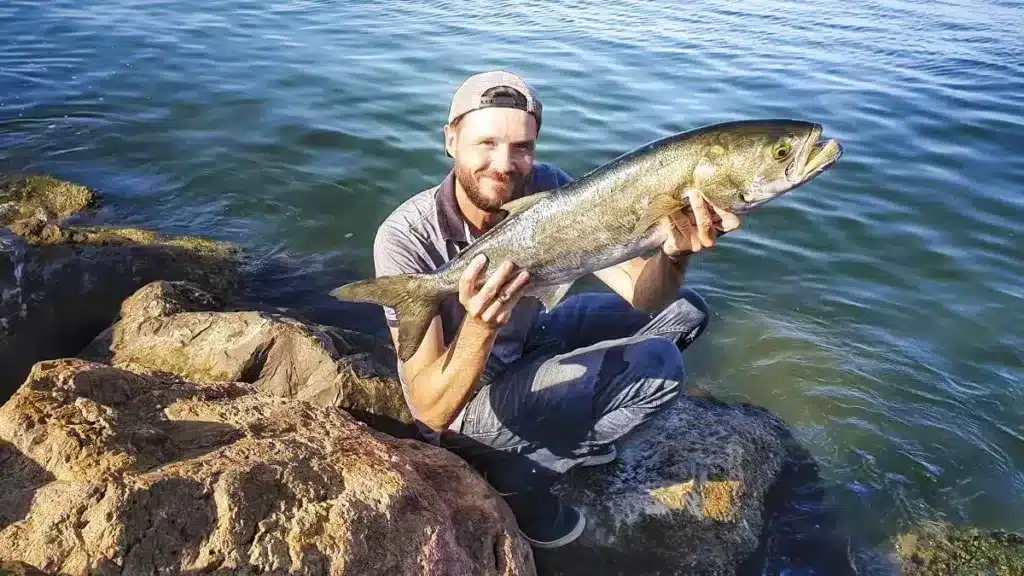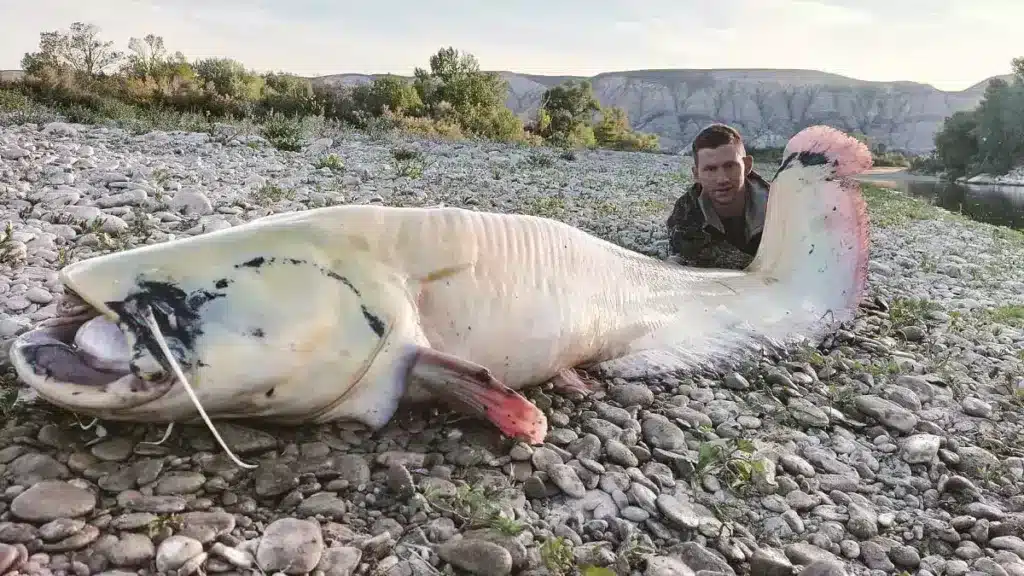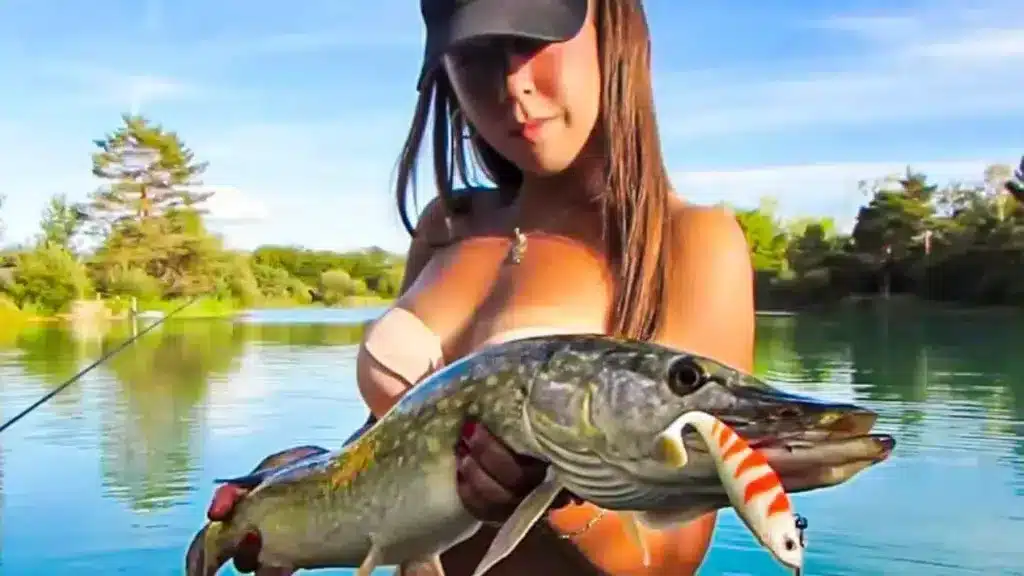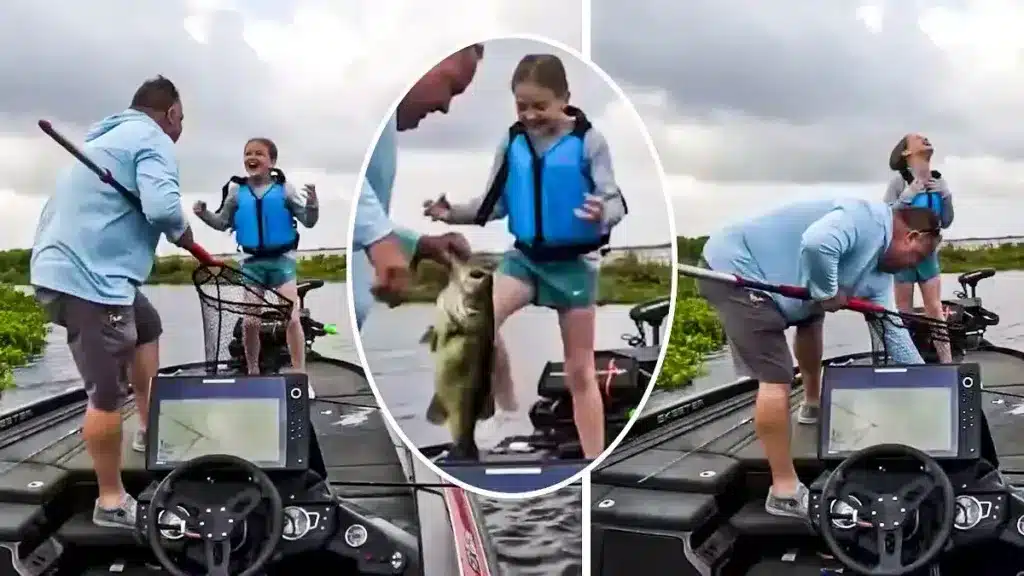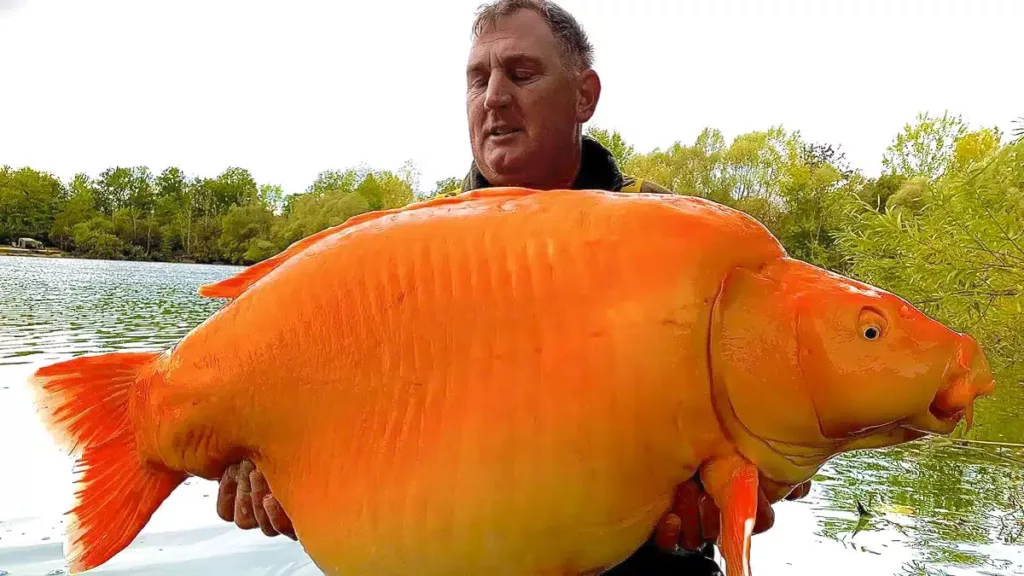By Martín Fisher
More and more anglers are committed to sustainability and care for the environment. Natural resources are limited and it is in our hands to take care of them and conserve them by enjoying such a natural and healthy sport as fishing.
Catch and release is an increasingly common practice among sport fishermen. However, we do not always do it in the most appropriate way to achieve the objective we are looking for, which is for the fish to survive without major damage without upsetting the balance of the environment to which it belongs, whether in the sea or in fresh water.
Here are some tips based on the experience we have acquired over the years for a good catch and release.
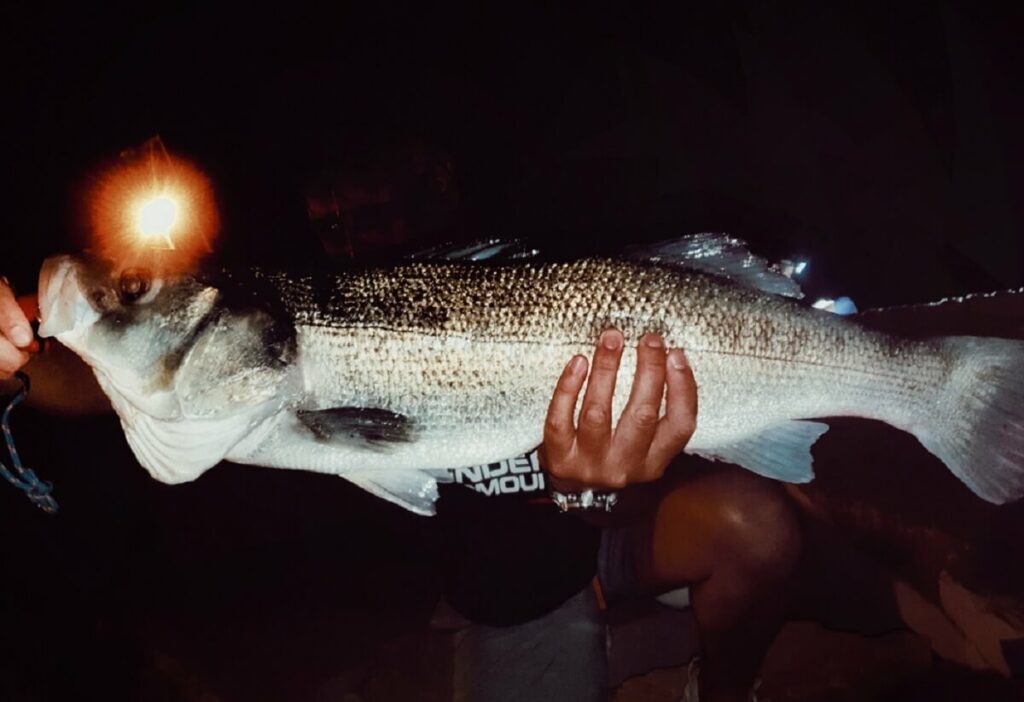
1. The equipment
It has to be suitable for the type of fishing and size of fish we are looking for. If we are looking for small fish, we will use spinning tackle: light, ultra-light or rockfising rods, reels and lines, and if we are looking for bigger fish, medium or heavy spinning tackle. There is a wide range of products and brands on the market to suit every need. It is very important and the reason is not to subject the fish to extreme stress which would seriously jeopardise their recovery and reintroduction into the environment, especially the larger fish which, if we fish them with excessively light equipment, will literally give their all in the fight as they secrete a type of acid (lactic) due to stress, accompanied by a drastic drop in muscular PH which will paralyse/daze them completely and they will end up dying under anaesthetic (rigor mortis), making their recovery and catch and release impossible. In general terms, it should also be noted that sea fish, especially pelagic fish such as bluefish, leerfish, bonito, Atlantic pout, amberjack, amberjack, etc., as they are so nervous, active and combative, are much more delicate to recover and susceptible to stress and their lactic acid will shoot up due to the fights and waste of energy they put up.
2. The hooks
It is always better to use hooks than trebles or jigs. Ideal without death, although you can also use simple and/or biodegradable hooks, with a rounded shape (wide opening) and of a thickness and size always appropriate to the size and type of fish we are going to look for. The puncture is much cleaner and it is easier to remove the hooks without tearing them as, due to their design, they tend to hook easily in low risk areas such as the mouth and the corner of the lips with more cartilage and less nerve endings and muscle. In this way we reduce the risk of the hook getting caught in the gills, gills, oesophagus or other more vulnerable parts of the body by a very high percentage. In the event of breakage, they biodegrade naturally, releasing the fish without harming the environment. There are hooks of this type available on the market for use.
3. The baits
It is always better to use spinning and hard lures rather than natural or soft baits, as this significantly reduces the risk of the fish gobbling. The size of the lure must also be in accordance with the equipment and the type of fish we are going after. Smaller lures for small fish, bigger lures for big fish. Generally speaking, proportionally larger lures always have less risk of damage as they are more difficult to be attacked by any fish and are more likely to be engulfed. It is also recommended that lures should if possible be designed and manufactured from sustainable materials such as wood, tungsten or recycled plastics as they are less harmful to the environment.
4. The bite
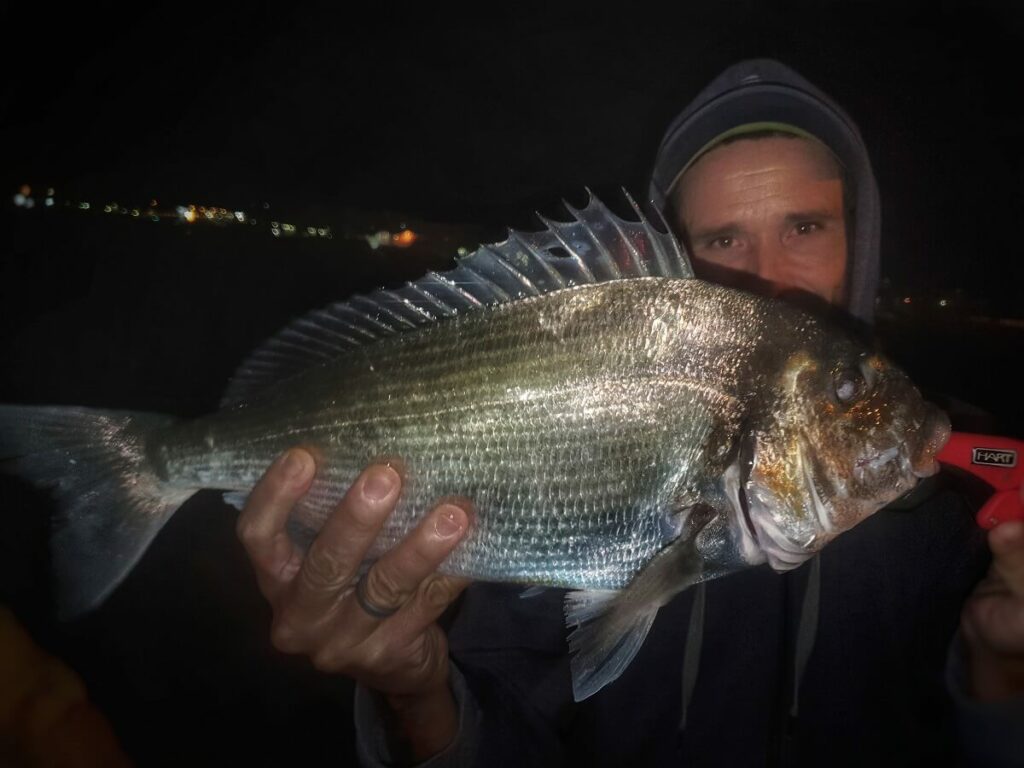
Don’t wait too long for the fish to swallow, if you feel the fish’s touches it’s better to be quick on the hook without waiting too long or giving disproportionate blows to the rod. This way we avoid the fish swallowing and we get it to stick cleanly from the snout without further damage.
5. The net
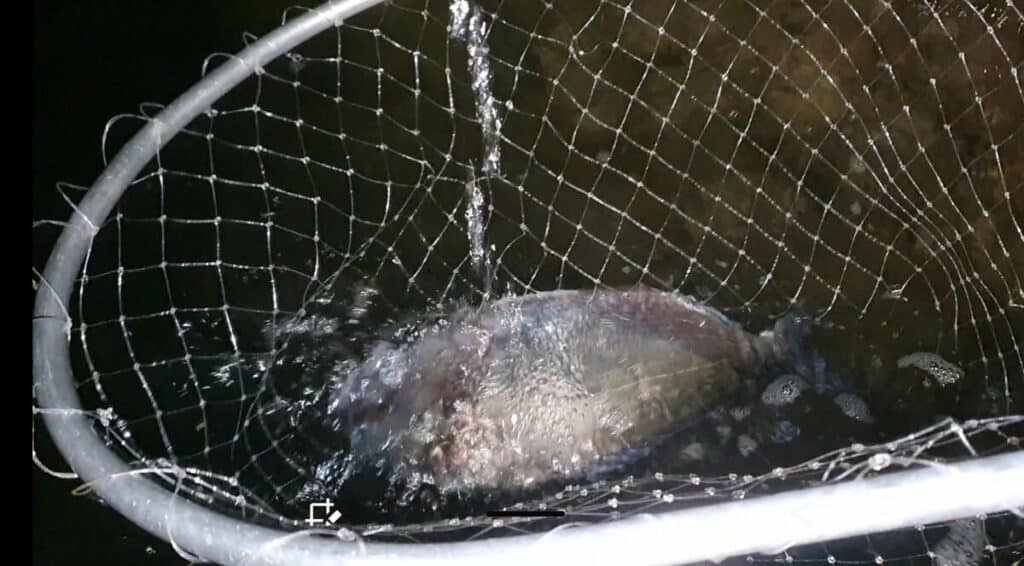
This is essential not only to ensure a good catch, but also to keep the fish in good condition while handling it in the water at all times. The bigger and wider the net, better. It is essential that the inner fibres that are intertwined are not made of fabric to avoid unnecessary tangling of hooks or fins that would delay and complicate the whole process.
6. Remove the hook
The experience and patience of the fisherman is fundamental. It must be done slowly but surely. Always keep the fish inside the line and as close to the water as possible, but do not submerge it completely. Use suitable long pliers and carefully look for the angle of exit of each hook without tightening it. It is important not to be rough and to do it calmly without pulling or twisting the fish with the pliers to avoid tearing or injury. Holding and immobilising the fish with a specially designed grip while dehooking also makes the process easier.
7. Size and weight
If the fish is large it is preferable to measure length and girth and use a calculator to get the estimated weight according to the species. On the internet there are several options that give you approximate weights. Another option is to moisten a suitable bag, canvas, sack or carpet with the same water from the sea, river or marsh from which you have taken the fish, take it out of the bag and place the fish carefully, pour a bucket of the same water over the body and gills (you can do this several times), introduce the fish carefully into the bag and holding the handles (not the gills) weigh it quickly with the bag (it only affects a few grams upwards and avoids unnecessary damage and tearing). Remember to moisten your hands beforehand with the same water if you touch the fish so as not to alter the mucous membrane that protects it and to always keep the fish hydrated.
8. Photos and videos
Then, to immortalise the moment, hold the fish horizontally (under the head and by the tail) with both hands slightly moistened. If the fish is not large, it can also be held vertically, carefully holding it by the mouth as long as it has no teeth. Never put your fingers inside the gills. A specially designed grip will facilitate the process so that the fish remains still as well as a partner to help you with the photos. Don’t take too long, a couple of minutes will be enough. Then once the fish has been measured, weighed and the photos taken, carefully place the fish back in the net into the water.
9. Release the fish
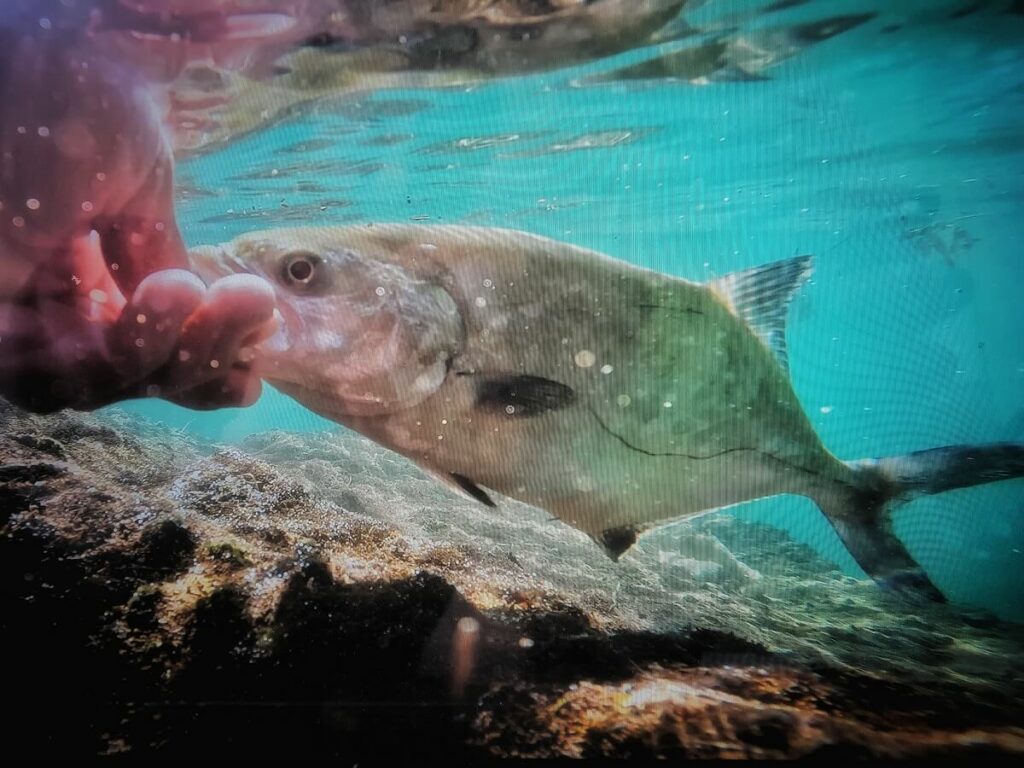
Before releasing the fish to tranquilise it and protect its mucosa from wounds and possible bacterial infections, fungi or parasites, I usually use a broad spectrum antiseptic and/or disinfectant/fungicide, especially for salt or fresh water, depending on the case. It is important that it is completely harmless and biodegradable. There are several options available on the market. Using the same water you have taken out of the medium in a 250/500ml container, pour a few drops of the product and pour/spread the contents over the body, mouth and gills. This will be enough to relax the fish and protect/reactivate its mucosa against possible infections. You can do this inside the sack or on a dampened tarpaulin, sack or carpet. Keep the container for the future. Then, before releasing the fish, I usually moisten my hands again and while holding it gently by the tail, or by the mouth if it has no teeth, I carefully remove the sack to start oxygenating it with gentle lateral movements in the water and without hitting it. Normally only a few seconds pass and the fish, naturally propelled by its body and tail, frees itself from my hands and leaves without further damage, disappearing to the bottom without a trace. If this is the case, it is a good sign and the catch and release has been successful. If you still cannot revive a fish (you will notice that it is not well and does not respond) it is best not to release it. Take it home and enjoy a good fish with your family or friends. Eating fish is part of a healthy diet and you are not doing anyone any harm. For one fish you take home you will have successfully released 10, giving them a chance to survive another day in their environment.
10. The size of the fish
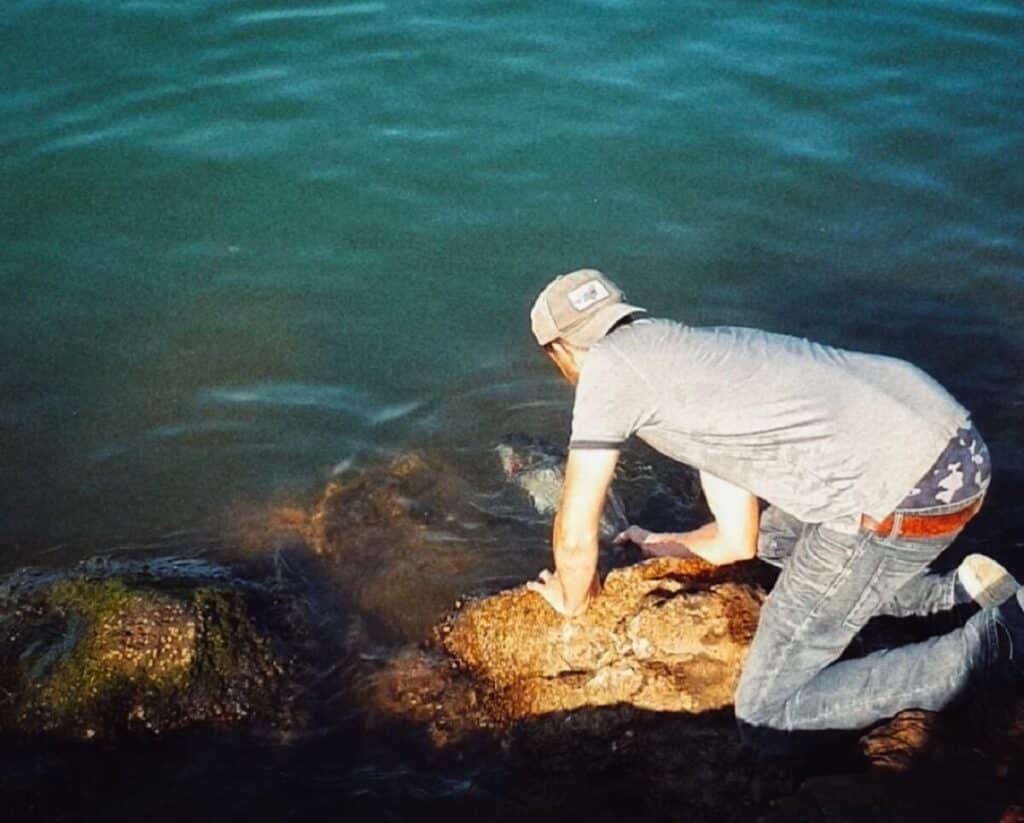
Remember that the larger specimens are the most delicate and difficult to recover (they are proportionally much more stressed than the smaller ones) and if they die or are not returned, it affects the balance of the environment to which they belong very negatively because they are excellent breeders and also control overpopulations of other fish, as they prey on them, even on their own species. Releasing these large fish in good conditions is of paramount importance not only for their successful survival, but also for the balance as they act as self-regulators of the biodiversity and health of the environment to which they belong. It is important to be aware of the list of native species in each region.
11. The environment
When we go out fishing, another way of having a positive impact on the environment is to collect waste such as plastic, cans or glass that we find on land or that we take out of the water with our rods, put them in a rubbish bag together with the rubbish we generate ourselves and recycle it. In this way, we ensure that fishing and our actions help to conserve and care for the environment on a daily basis. These small gestures also have a positive effect on catch and release, as we help to clean and maintain the direct and indirect environment in which fish live, such as the sea and beaches, rivers and forests, marshes and mountains.
Fishing is something very natural and as such we can also act in a sustainable and responsible way making the planet a better place for everyone: people, plants and animals. As always, everything can be improved and each one of us has the possibility to do so by adapting to each of the circumstances that may arise in our fishing trips with the aim that the fish survive with guarantees in their natural environment, whether in the sea or in fresh water.

